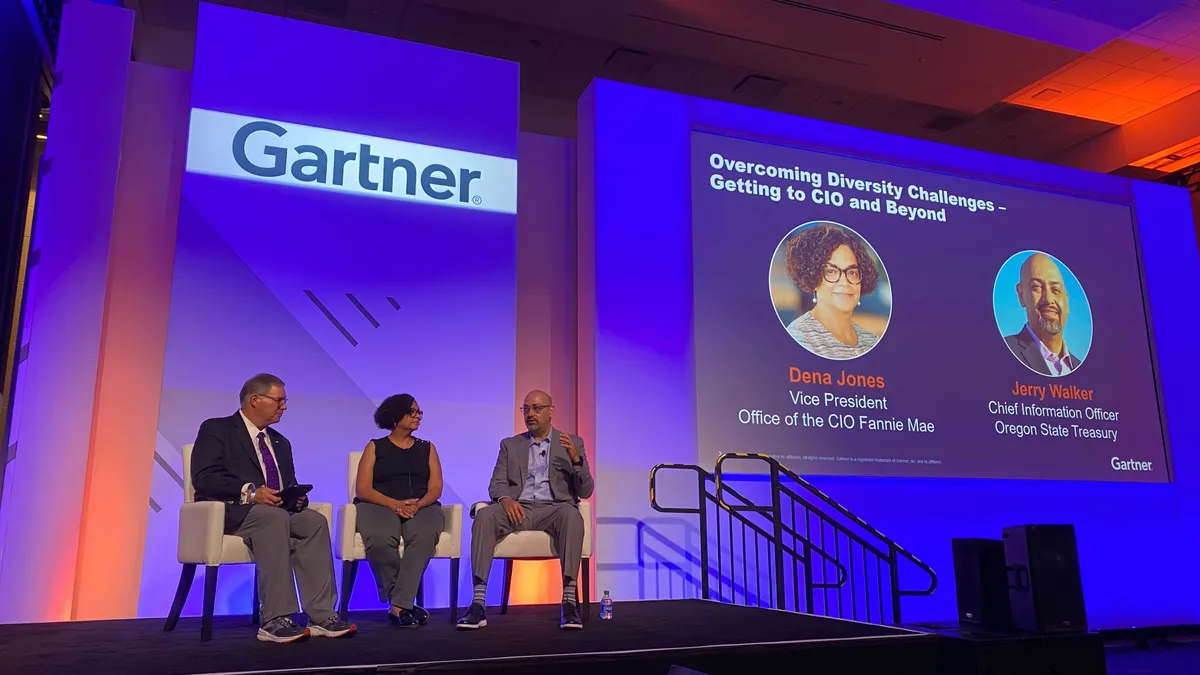ORLANDO, Fla. — IT and the tech industry grapple with a long-standing diversity problem. It's a CIO’s job to proactively address the issue, broadening talent pipelines and creating a sense of belonging.
There are no shortcuts to building an equitable environment or fixing a bad one. CIOs and technology leaders must keep in mind actions speak louder than words.
At London-based retailer Burberry, diversity, equity and inclusion are something the entire leadership team is passionate about, according to Jonathan Sheldrake, VP of IT.
“If you speak to anybody from the IT leadership team or our leadership team at Burberry, this is what they’ll lead with,” Sheldrake said Monday at the Gartner IT Symposium/Xpo. “Because that’s the unlock, I think, to doing things differently, better, [and having] more productive and more engaged people.”
Sheldrake said he makes sure vendors share similar or complementary diversity, equity and inclusion values.
“I expect my partners and my organization at Burberry to live by those values and show up for them,” Sheldrake said.
The talent pipeline
Another area of focus for CIOs should be talent sourcing for leadership and across teams. For Dena Jones, VP, office of the CIO at Fannie Mae, the help she got along the way in her early career sticks with her.
“It’s part of the reason why I do what I do,” Jones said Wednesday during the annual conference. “There’s so many of us, Brown people, Black and Hispanics, in similar situations that don’t have those role models. Representation matters.”
One of the ways Jones pays it forward is by focusing on those just starting their career journey. The company has a heavy investment in local campus programs to engage prospective interns that can grow into associate positions upon graduation, Jones said.
“A few years ago, Fannie Mae created Future Housing Leaders," Jones said. "They have a network of companies in the mortgage industry and they are sourcing diverse talent to expose them to careers in housing and then technology in the housing industry.”
The Washington, D.C.-based mortgage company also partners with affinity groups and nonprofit organizations, such as Inroads. For sourcing mid- to senior-level career candidates, the company leverages resources like the Hispanic Technology Executive Council, or HITEC, and the Information Technology Senior Management Forum, or ITSMF.
Diversifying the workforce requires the entire organization to take initiative.
“When I look at what I’ve done in my organization, nobody appointed me as DEI leader for Fannie Mae or for the CIO,” Jones said. “It takes a lot of people to support talent acquisition to make this happen.”
Some IT executives enter leadership roles with an explicit mandate to foster diversity. When Jerry Walker, CIO at the Oregon State Treasury, was asked to join the department, he said he was tasked to do just that.
The agency used to only seek out candidates with formal qualifications — such as college degrees — but that has changed drastically, according to Walker. Similar to Fannie Mae, the organization uses partnerships with local entities and nonprofits to source nontraditional candidates.
“We work with them and we say, ‘It’s okay if you don’t know this, we’re going to provide all this training and we’re going to upskill you, so if this is all you know, guess what? We’re going to teach you,'” Walker said Wednesday during the conference.
Much like the other government entities, the agency often struggles to compete with private sector salaries. But the upskilling potential serves to attract a broader talent pool.
Walker said the goal is not to hire a candidate and have them work at the company indefinitely, but rather to position a role as a launching pad for the rest of their careers.
"When they hear that, they get excited to work here," Walker said.













